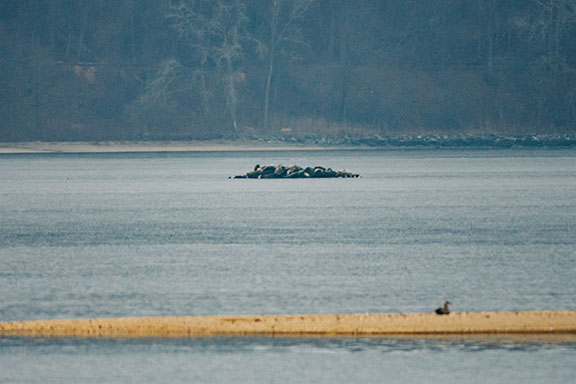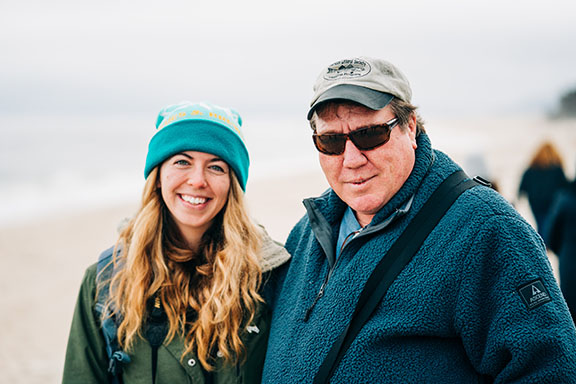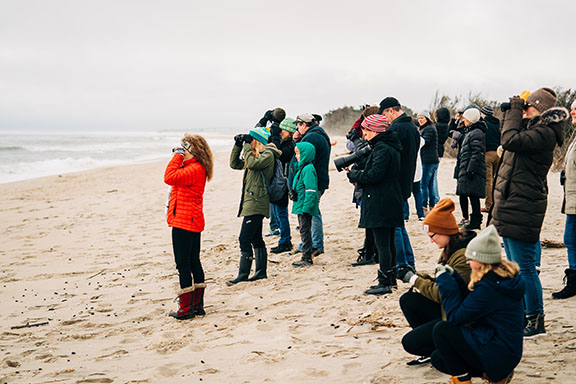
By Raven Rentas
HIGHLANDS – A little fog didn’t keep almost 50 people from eagerly searching for harbor seals along the Sandy Hook shoreline Feb. 1.
Families, friends and animal lovers of all sorts joined the American Littoral Society for its seal and waterfowl walk Saturday morning, led by Jeff Dement, the society’s fish-tagging program director.
At various locations along the peninsula during the two-hour event, Dement identified different waterfowl and scouted for seals. Through binoculars, telescopes and long-lens cameras, participants spotted the marine mammals bobbing and swimming in the water and, at Skeleton Hill Island, saw between 20 and 30 seals hauling-out, or resting out of the water on a large rock.

According to the society’s education director Nicole Haines, there are several reasons seals come to New Jersey during the winter months, including preferring the colder water temperatures of the north Atlantic. In March, the seals migrate farther north so they can continue to stay in the cold waters that suit their bodies. Dement said they also come to the Jersey Shore to look for prey.
Besides discussing seals and waterfowl, Dement pointed out many different plants, sharing interesting facts, personal stories and historical events tied to them.
“There’s history everywhere you look around Sandy Hook,” he said.
Longtime friends Beth Spiro, Pat Steen, Mara Neske and Carol Cuddy, residents of Monmouth County, said they often participate in events held by the American Littoral Society. This was Neske’s first time attending this particular walk, which she admitted was not what she expected.
“It was so much more diverse than I thought it’d be. I thought, ‘Oh, he’s going to show us places to see seals and when I walk here, I can go see them,’ but that truly was not the real highlight,” Neske said. “It was the whole walk and how interesting Sandy Hook is. I mean, it’s amazing.”
Haines believes most people participate in the walk to see the seals rather than the waterfowl, but 8-year-old Manus Connagham was an exception. He came to see both.

“I’m into marine life, reptiles, dragons and birds,” he said.
Manus and his mother, Sarah Benson, traveled all the way from Brooklyn to attend the Saturday morning walk.
“He’s a bird watcher so we’re just always looking out for cool bird watching and nature trips,” Benson said.
Manus aspires to become an ornithologist when he grows up. According to him, he “fell in love with animals” from the moment he was born.

Dement hopes events like the seal and waterfowl walk will help people recognize the importance of marine life.
“We (the American Littoral Society) function as a bridge between science and the public,” he said. “Education is at the core of everything.”
Haines said she typically plans four seal and waterfowl walks between January and March, with two on weekends and two on weekdays. She is considering adding an extra one if more seals continue to show up. Look for announcements at LittoralSociety.org.

The article originally appeared in the February 6-12, 2020 print edition of The Two River Times.














